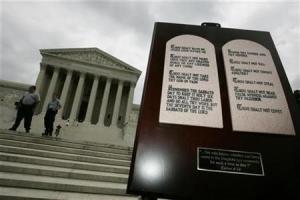Academic surprise: Jesus’s healings, exorcisms virtually undisputable

An absolutely amazing feature in recent critical New Testament thought is the significant alteration that has developed regarding the scholarly attitude concerning [Jesus’ miracles].
Due to the evidential application of historical considerations to the Gospels ... critical scholars virtually across the scholarly spectrum acknowledge that Jesus was a healer and an exorcist. This is not necessarily to answer the questions of what really or exactly happened on those occasions or what was the ultimate cause of the events in the sense of being from God’s hand and so on, but it is granted by scholars today that events at least very similar to those depicted in the Gospels actually did occur. This is the case even for more skeptical researchers.
Earlier in the previous century, even the New Testament skeptical scholar Rudolf Bultmann acknowledged that there could be no doubt that Jesus healed sick individuals and expelled demons. Further, some of these miracle accounts “originated in the earliest church.” Much more recently, Jarl Fossum notes: “That Jesus was a miracle worker is central to the Christology of the New Testament Gospels and Acts.” Perhaps surprisingly, prominent Jesus Seminar member Marcus Borg attested quite strongly, “Despite the difficulty which miracles pose for the modern mind, on historical grounds it is virtually indisputable that Jesus was a healer and exorcist.” Further, Jesus’s healing cases clearly cannot all be accounted for simply as “faith healings” alone, for we just do not know how far Jesus’s powers actually extended. Prominent historical Jesus researcher John Meier states, “In sum, the statement that Jesus acted as and was viewed as an exorcist and healer during his public ministry has as much historical corroboration as almost any other statement we can make about the Jesus of history.”
Such often positive statements and conclusions could be multiplied many times over from the relevant critical literature. Though many of these New Testament and other scholars include atheists, agnostics, Jewish authorities, and many skeptics among their numbers, they still agree often that the available data indicate clearly that Jesus was in some sense a healer and exorcist.
Few scholars have provided more meticulous analyses on this topic than either John Meier or Graham Twelftree. Meier concluded his over 400-page in-depth study by judging that more than 40% of the miracle claims presented in the Gospel texts actually correspond to specific historical occurrences from the life of Jesus. As indicated above, Meier quite amazingly concluded from Jesus’s actions during his public ministry that not only was he viewed widely as a healer and exorcist, but that there is as much historical verification for these aspects of his life as there is for almost anything else that may be said about the historical Jesus.
In fact, these aspects are much better evidenced than many other assertions made about Jesus, ones that are often considered to be settled issues. The meticulous nature of Meier’s studies on the available data pertaining to the historical Jesus has made him as influential as almost any scholar in this field, indicating the worth of his contribution to this topic.
In an even lengthier critical study, Twelftree concluded that a much higher percentage (approximately 76%) of the Gospel miracle accounts accurately portray historical events in Jesus’s life. Twelftree’s study indicated findings quite similar to Meier’s: “There is hardly any aspect of the life of the historical Jesus which is so well and widely attested as that he conducted unparalleled wonders.” Astonishingly, these miraculous deeds “were the most important aspect of Jesus’ whole pre-Easter ministry.”
Crucially as well, neither Meier nor Twelftree discount the remaining Gospel miracle accounts where there is insufficient historical evidence to actually establish these occurrences as individual events. Hence, the accounts may very well describe healings and exorcisms that actually happened. Both scholars agree that a lack of evidence fails to disqualify an event; this just indicates that the other examples cannot be proven by the canons of probability.
That the sum of Jesus’s healings and exorcisms may indeed mark the centermost of Jesus’s pre-Passion actions, as mentioned by Twelftree, is another means of marking their importance. That Jesus pointed to his miracles as indications that he was God’s spokesperson is still another signal as to the import of these occurrences.
Craig Keener is another New Testament scholar who investigates the topic of miracles in minute detail. His treatment of Jesus’s miracles is not as comprehensive per se, since his emphasis is quite clearly placed on contemporary miracle claims. Rather than examining the historical intricacies of the Gospel pericopes, as do Meier and Twelftree, Keener chiefly and helpfully provides an overview of the current scholarly discussion.
Keener argues that all ancient sources likewise agreed that Jesus performed miracles, including ancient non-Christian texts from both the Jewish rabbis as well as from the early philosophical critic Celsus. Quite surprisingly, none of these ancient texts attempted either to deny or refute the Christian claims. Additionally, Keener enumerates approximately a dozen different ancient reports that record Jesus’s miracles, including the five most commonly identified Gospel sources (Q, Mark, M, L, and John). He also finds that there is very little development over the time between the composition of the Gospels, concluding, “The essential substance of the miracles themselves remains unchanged.”
Keener likewise briefly addresses the state of recent scholarly views on the subject of Jesus’s miracles, especially from within the ranks of the Third Quest for the historical Jesus. Several exceptionally positive affirmations are reproduced from these critical scholars, including even the radical critic Morton Smith, whom Keener terms the “most skeptical toward the Gospel tradition.” Yet, while Smith dismisses Jesus’s miracles, he still “argues that miracle working is the most authentic part of the Jesus tradition.” Keener ends this chapter by posing two methodological sorts of questions for later discussions: the potential contrast of Christian with non-Christian miracle claims and the huge issue of contemporary a priori assumptions against miraculous events.
Borg notes three indications why the historicity of Jesus’s healings and exorcisms is virtually undisputed even by the vast majority of critical scholars. Initially, these reports are affirmed in the “earliest sources” that we possess. Further, these occurrences were thought to be “relatively common in the world around Jesus” in that general time.
Lastly, Jesus’s opponents did not contest the proclamations that He did healings and exorcisms, but “they claimed that his powers came from the lord of the evil spirits,” thereby admitting the existence of the events themselves by their very criticism. In this way, Jesus’s disciples, the crowds of people who heard and saw Jesus, and even His adversaries all agreed to what happened and that at least these healings and exorcisms were due to Jesus’s skills and power.
Excerpted from On the Resurrection, Volume 1: Evidences by Gary R. Habermas (B&H Academic, 2024). Used by permission.
Originally published at the Worldview Bulletin Newsletter.
Gary Habermas, Ph.D., is a Distinguished Research Professor at Liberty’s John W. Rawlings School of Divinity, where he teaches in the Ph.D. program. A highly regarded Christian apologist, Habermas has published 48 books, many on Jesus’ resurrection. He has also written on near death experiences, doubt, and suffering. He has over 85 contributions in other books and almost 200 articles and reviews published with Oxford, Cambridge, Blackwell, Harper, Dell, Fortress, Baker, IVP, and Zondervan. He has taught at Liberty for 41 years.




























